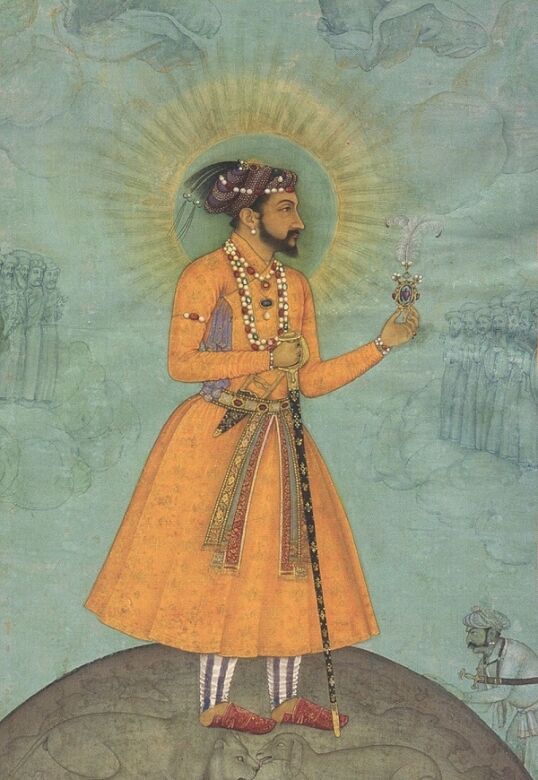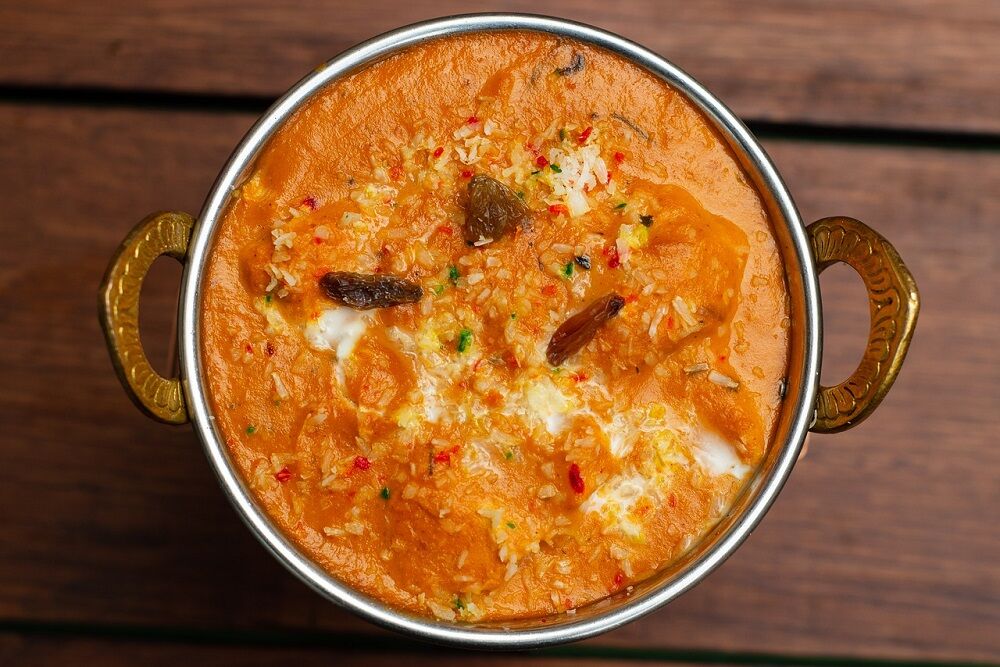What is Korma?
Understanding Spices
Your cart is empty.
SUBTOTAL
£0.00

Understanding Spices
The chicken Korma. This well-renowned Indian curry can be found on every Indian restaurant menu around the world. The curry sauce itself can be found on supermarket shelves everywhere. If there was to be one curry that represents Indian cuisine, it might just be a chicken Korma. So, what is it, where did it come from and why is it so popular?
First things first, while the classic chicken Korma is one specific dish, there are many different variants. Like the baltis and the karahis, it’s actually a method of cooking rather than one set dish. The English word comes from the Urdu word ‘qormā’ which means ‘braise’ and that’s exactly what the Korma method is – braising. Whether you’re using the popular choices of chicken, mutton, vegetables or another type of meat, all of it begins with braising. However, the dish we find in Indian restaurants today is very different to its origins.
To find these origins, you’ll have to travel all the way back to the Mughal empires of the 16th century. It was not uncommon to find Kormas being prepared throughout Mughal court kitchens. Interestingly, there is one such famous ‘white Korma’. This nickname probably derives from the thick white gravy or sauce that contains the vegetables or meat. This gravy is made from yogurt and other herbs and spices (more on that later).
During the time of the Mughal’s, the traditional Korma would have been cooked in mud pots over something called a chulha – a mud stove often found outside, heated with wood burning underneath. Even now, a lot of the rural population in India will still cook like this and it’s hard to ignore the fact that curries cooked on a chulha or in a tandoor just have that ‘special something’ about them.
Indeed, the Korma was considered to be a rich banquet dish that was quite ‘showy’ and used lots of yoghurt together with expensive flavourings like cardamom, nutmeg, rose water, saffron, as well as nuts like almonds and dried fruits. In fact, it’s believed that the Korma was the choice of dish served to Shan Jahan (the fifth Mughal emperor, known as the king of the world) and guests at the grand inauguration of the Taj Mahal. If the so-called ‘king of the world’ liked it, it must’ve been good!


Of course, nowadays, especially in British-Indian restaurants, the Korma is a bit different. Naturally, in urban housing there isn’t really the space for a chulha! The meat (or vegetables) will be marinated in yogurt and then braised on a high heat until all the juices have been condensed into a thick sauce (white in colour). While traditional Kormas had a long, slow cooking time, the restaurant chefs simply don’t have that luxury. They’re cooking to order and, like the Balti, the Brits want their food pretty fast!
As the British curry houses developed through the 1960s and 1970s, it was clear that the British wanted a range of curries that included hot, medium and mild curries. And so, the Korma developed into a mild, creamy meat dish. Its sweet, heatless sauce means it’s ideal for beginners and goes some way in explaining why it’s perhaps so popular in the UK. In a survey carried out by Indian beer company Kingfisher, in recent years the Korma has in fact overtaken the tikka masala to become Britain’s most popular Indian curry!

As mentioned earlier, because it is a style of cooking rather than one set dish, even in India you will find regional differences. For example, in Northern India the curry is probably closer to what we find in the UK. It’s mildly spicy, white in colour. However, in Southern India they use a tomato-based gravy which is very hot and spicy. Further additions and tweaks such as dried coconut (Southern India), Indian bay leaves, ginger and chilli can all be used.
In the UK, along with the meat, vegetables and thick gravy sauce, you’ll often find it served with almonds, cashews or other nuts, as well as coconut milk. While it is ‘very mild’, a good Korma should not be bland, mind. Spices commonly used include:
In fact, that’s exactly what we’ve used in our very own Korma spice blend. We think this one is a great all-purpose curry powder, much like a ‘mild curry powder’ or Korma mix you would buy from a supermarket. You can use this to create child-friendly curry that the whole family can enjoy – even those not accustomed to spicy food!
If you fancy making a chicken Korma, we’ve got a recipe for you to follow right here.
Understanding Spices
Spices have long been integral to the UK's culinary landscape, adding depth, flavours, and richness to a myriad of dishes. From the pungent aroma of cumin in Indian curries to...
Read MoreUnderstanding Spices
Confetti is an essential part of any wedding day. Not only is it a wonderful way to greet a newlywed couple, but it also provides some beautiful photo opportunities. The...
Read MoreSeasonal Ideas
It’s no secret that any handmade gift will always be more special than a store-bought one. Homemade food gifts are especially wonderful, a labour of love that shows someone you...
Read MoreHealth and Wellbeing
It’s no secret that winter’s cold and gloomy weather makes us crave indulgent dishes like fondue and baked goods like sticky toffee pudding and apple crumble. While Christmas is the...
Read More